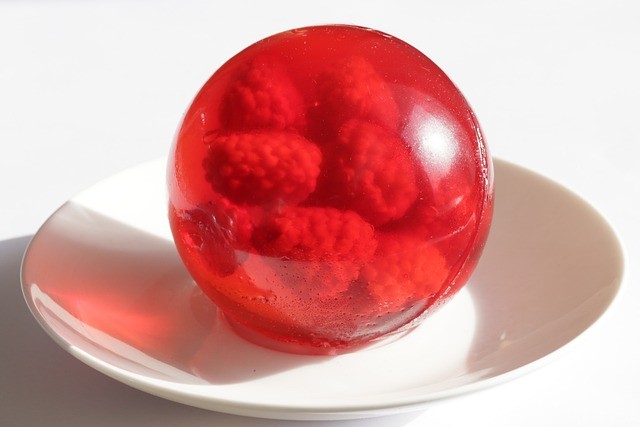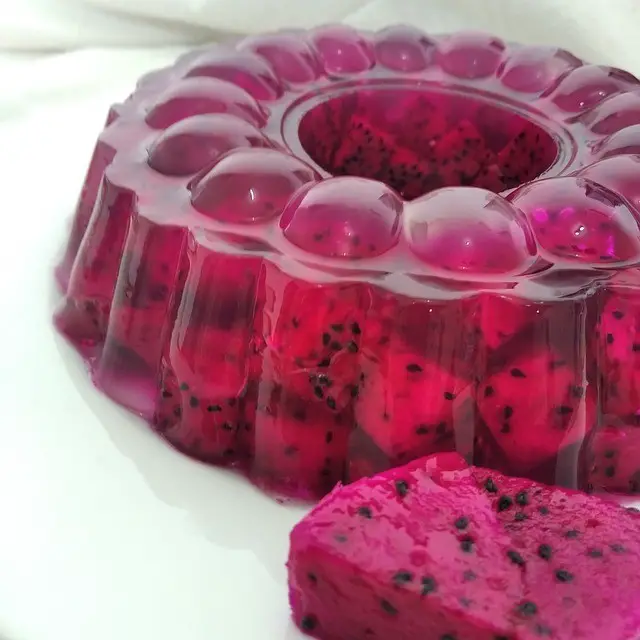Sugar has had bad press over the years because it has been associated with inflammation, a major risk factor for chronic disease. People with metabolic syndromes like diabetes have also been asked to reduce their sugar intake to manage blood sugar levels. People trying to lose weight have also been told that keeping off sugar is the right step to a healthy diet.
But is everything off-limit when are trying to make healthier food choices? Are all sweet treats off the table? Studies have shown that dark chocolate can be good. That means all hope is not lost when it comes to sweet treats even on a low-carb diet.
Since we’re talking about treats, why not answer, is sugar-free Jello bad for you? Can you include regular Jello in your ketogenic diet? How much sugar is in sugar-free Jello? What ingredients are used to make sugar-free Jello?
Is Sugar-free Jello Bad for You?
The answer may not be as straightforward. Let’s try and understand this fact in the keto diet aspect.
Is Sugar-free Jello Keto?
Jello is a popular dessert that doesn’t miss on most American menus. Besides knowing it as a jiggly and tasty treat, do you know what Jello is? What is it made of?
Basics on Jello
Jello is made from gelatin. Trying to figure out where you had gelatin from? Take a look at your bone broth when cooled, will you? Do you notice its jelly-like texture? That’s because it is high in gelatin.
You derive gelatin from collagen gotten from animal body parts like connective tissue, ligaments, bones, and skin. Once these body parts are boiled and collagen is filtered from them, you will ground it into powder. The powder is then sifted to make gelatin.
You can buy Jello as a powder that you can dissolve in boiling water. Once it cools, the collagen strands will bind together into a semi-solid structure with water molecules trapped in it.
Jello can also come in the form of pre-made desserts packaged in tiny cup servings. This is what most of you get from the supermarket.
Is the regular Jello you buy from your local store allowed on a low-carb diet?
Is Regular Jello Keto-friendly?
You cannot have regular jelly on the keto diet. This is because it has a high sugar content that will add to your carbohydrate intake. How many carbs are in your regular Jello? The carb content may vary depending on the variety of flavors of Jello available.
According to the USDA, a snack-size container of gelatin dessert provides you with 13.5 grams of carbs, 0 g of dietary fiber, and 12.8 grams of sugar. It also contains 1.16 grams of protein.
On a strict keto diet, your carb limit is 20-50 grams of carbs per day. Adding Jello as a snack will have you exceeding your carb limit considering how many grams of carbohydrates it contains in a snack serving size.
The carb and sugar content aside, regular Jello contains certain artificial ingredients that can impact your blood sugar levels. Some of these ingredients include artificial sweeteners, artificial flavoring, and artificial colors.
Due to the increased demand for these products, most of the ingredients used are artificial. They are added to mimic natural flavors. That lemon-flavored Jello does not get its tart flavor from lemons but from chemicals mixed to mimic that taste.
A good example is Strawberry Jello which contains sugar, gelatin, artificial flavor, fumaric acid, disodium phosphate, sodium citrate, and red color dyes. These ingredients will have an impact on your blood sugar levels and can kick you out of ketosis.
Is Sugar-free Jello Good for You?

Is sugar-free Jello bad for you? No, because there are fewer carbs in sugar-free Jello compared to regular Jello. The carbs in sugar-free Jello are low enough to be accommodated in a dirty keto diet. Instead of sugar, manufacturers use Aspartame, a non-saccharide sweetener, as a flavor enhancer. They also use natural food colorings to give your Jello that beautiful pop of color.
However, it is important to mention that although sugar-free Jello uses low-calorie alternatives to sugar, they may contain other ingredients that may spike your blood sugar and insulin levels.
Sugar-free Black Cherry Jello-O contains maltodextrin, which has a glycemic index higher than natural sugar. Other varieties contain sucralose which can kick you out of ketosis. These are sweeteners you should avoid on a low-carb or keto diet.
Keep off the pre-packaged store-bought Jello termed as sugar-free. You are better off making your own Jello in the kitchen since you have control of what goes in it.
Sugar-free Jello Ingredients

What goes into your low-calorie treat to make it acceptable on a low-carb or keto diet? We have said no to the ready-to-eat sugar-free Jello, so how do you prepare the powdered Jello?
Boxed Sugar-free Jello contains:
- Gelatin
- Adipic acid for the tart flavor
- Fumaric acid
- Sodium or potassium citrate to control acidity
- Artificial sweetener aspartame
- Acesulfame Potassium (artificial sweeteners)
- Color dyes
- Maltodextrin
Always read the labels to know how many grams of carbs and grams of sugar are in your product. As earlier mentioned, avoid boxed sugar-free Jello with ingredients like maltodextrin that can spike blood sugar.
Sugar-free Gelatin
To make your low-calorie dessert treat you need to choose low-calorie ingredients. There are several sugar-free gelatin brands in the market you can purchase to make your own Jello.
Simply Delish gelatin contains erythritol, natural colors, citric acid, potassium citrate, natural colors, natural flavors, and stevia extracts. You can use this as a snack in a balanced diet. Simply Delish Jel desserts are not only keto approved but also vegan-friendly since it is extracted from plant-based ingredients.
Here’s how you’ll make your sugar-free Jello depending on whether you are making it from scratch or packets.
How to Make Jello

This is how to make Jello from Jello packets:
Ingredients
- A packet of Jello
- 1 cup hot water
- 1 cup cold water/ ice cubes
- 1 cup fresh fruit (optional)
Directions
- In a large bowl, mix one packet of Jello with a cup of hot water and whisk until it is well dissolved.
- Pour in one cup of cold water into the mixture and stir. Your Jello will set faster if you work with ice.
- Pour your mixture into a bowl, mold, or baking pan. You can add fruits at this point if you like and stir.
- Refrigerate for 2 to 3 hours. To know if it is ready, press your finger against the Jello. If it sticks it’s not ready, if it doesn’t then it’s ready.
- If you used a mold, you can de-mold your Jello by dipping it in warm water and then flipping it onto a plate.
- Your Jello is ready to eat!
Remember you are to use keto-approved fruits like strawberries, blueberries, blackberries, raspberries, lemons, and lime.
Now, let’s make Jello from scratch:
Ingredients
- 1 cup fruit juice
- 1/4 cup cold water
- 1/4 cup hot water
- 1 tablespoon gelatin
- 1 cup fresh fruits (optional)
- Stevia (or a natural sweetener like monk fruit sweetener)
Direction
- Add the tablespoon of gelatin to your cold water and stir.
- Pour your hot water into the mixture and stir.
- Add 1 cup of your fruit juice and keep stirring. Leave for a few minutes for your mixture to thicken.
- You can add your sugar substitute at this point if it’s not sweet enough.
- Pour your mixture into a mold, baking pan, or mold. Throw in some fruits if you’d like and stir to disperse them.
- Refrigerate for 2 to 3 hours. Check if it’s ready by pressing your finger against the Jello.
- Demold your Jello and serve.
Again, only use fruit juice from low-carb fruits as mentioned above.
Does Sugar-Free Jello Have Carbs?

Since sugar-free Jello uses low-carb sugar substitutes, does that mean it contains no carbs? How many carbs in sugar-free Jello? According to USDA, one snack serving container of sugar-free gelatin dessert contains 4.01 g of carbs and no dietary fiber. It also contains 0 g of sugar.
Is Sugar-free Jello bad for you? Sugar-free Jello can have an impact on your blood glucose and insulin levels, although a smaller amount compared to the regular Jello. It does count as a low-carb food.
Is Jello Good for Diabetics?
It depends on the kind of Jello consumed. Regular Jello is not good for diabetics because it has a high sugar content that can spike blood sugar quickly. Sugar-free Jello varieties can be good for diabetics if you choose those without ingredients that can affect your sugar levels.
Jello containing sucralose and maltodextrin will spike your blood glucose and insulin because they are high glycemic index foods. Diabetics can enjoy low-carb gelatin desserts in small portions without worrying about blood sugar spikes, as long as they don’t contain the above-mentioned artificial sweeteners.
What Benefits Does Jello Have?
Regular Jello contains no fiber, is low in protein, and is high in sugar. It does not count as a healthy food. You can get some health benefits from consuming sugar-free Jello thanks to its ingredients. The benefits include:
- Low in calories making it good for weight loss.
- Can be good for hydration because it contains a lot of water.
- May be good for your joints because it is rich in gelatin. Studies have shown that gelatin helps reduce joint pains and improves mobility.
What are the Side Effects of Drinking Jello?
There are cons to consuming Jello. Your healthcare provider may advise you against it because it contains:
Artificial Ingredients
Jello contains a lot of artificial ingredients like sweeteners, color dyes, and flavorings that may have a negative impact on your health. Individuals may be sensitive or have allergic reactions to these ingredients.
Aspartame may cause migraines, mood changes, and headaches in some people. Individuals with phenylketonuria (PKU), a genetic disorder are advised to avoid Aspartame. It causes seizures brain damage and mental disabilities.
In people without PKU, aspartame may cause bloating, diarrhea, and other digestive issues. Maltodextrin has the same side effects.
Limited Nutrition Value
The benefits of Jello are linked to its low-calorie and carb properties. Besides these, it has no significant nutritional value. It is low in proteins, vitamins, and minerals. The benefits it poses can easily be gotten from consuming other healthier foods.
Final Thoughts
Is Sugar-free Jello bad for you? Sugar-free Jello, if consumed in moderation, is okay. It has little impact on your blood sugar meaning it can be added to a dirty keto diet. Avoid the kinds of Jello with high GI artificial sweeteners like maltodextrin and sucralose.
Jello has insignificant nutritional value so it cannot be eaten daily. However, as a once-in-a-while snack, it is okay even for diabetics. Sugar-free Jello can be a snack on your weight loss diet since it is low in calories. Always check the labels on your sugar-free Jello to see what type of sweetener it contains to understand how it will affect blood glucose and insulin.
Was this article helpful? How often do you consume sugar-free Jello? Which is your favorite flavor? Do you have any questions on today’s topic? We’d love to hear from you, so do reach out in the comments!







